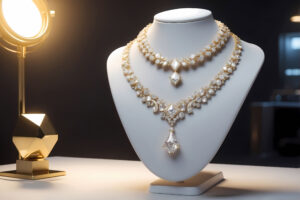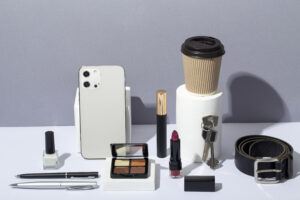When it comes to luxury goods, authenticity matters. People buy premium products not just for their quality but for the confidence that they’re getting the real deal. Counterfeits have made it harder to trust the market, but blockchain is stepping in as a powerful tool to help protect brands and buyers. That said, there’s a lot of confusion about what blockchain can actually do.
Let’s break down how blockchain works in this space, why it’s valuable for luxury goods, and clear up some common misunderstandings along the way.
Setting the Record Straight
First things first—blockchain isn’t an authentication tool. It doesn’t directly prove whether a product is genuine. Instead, it’s a secure way to keep records of a product’s history. Think of it like a digital logbook that tracks an item’s journey from its creation to its current owner.
While technologies like AI or advanced imaging confirm authenticity, blockchain ensures that this verified data is stored safely and can’t be tampered with. It’s about keeping the records honest and accessible.
Why Blockchain Is Useful for Luxury Goods
Blockchain is all about transparency and trust—critical factors when buying or selling high-end items. But while blockchain provides an immutable record, its reliability depends entirely on the accuracy of the data entered in the first place. Here’s how it helps and where challenges remain:
- Permanent Records: Once information is added to the blockchain, it can’t be changed. This ensures that buyers and sellers can always verify the history of a product with confidence. However, without a trusted data source at the point of entry, even blockchain records can be flawed.
- Data Security: Blockchain uses cryptography to lock in data, making it difficult for counterfeiters to manipulate records. But securing the data itself isn’t enough—it must be validated at the source to ensure accuracy.
- Real-Time Updates: As a product moves through the supply chain, blockchain updates the record at every step. It’s like a constantly updated timeline, but without a strong link between a physical item and its digital record, discrepancies can occur.
By pairing blockchain with advanced authentication technologies, digital product passports create a direct, verifiable link between a physical luxury item and its on-chain record. This ensures that what’s recorded on the blockchain reflects the real-world product, closing the gap between digital security and physical authenticity.
How Decentralization Makes a Difference
One of the defining aspects of blockchain is decentralization. Instead of a single organization controlling all the data, it’s distributed across multiple nodes. However, it’s important to note that many luxury blockchains, such as Aura Blockchain, are actually centrally managed rather than fully decentralized. Still, the core benefits of blockchain remain:
- No Middleman Needed: Brands can record product data on the blockchain, making it directly accessible to consumers without requiring a third party to grant access.
- Consumer Confidence: Buyers can independently access the blockchain to review a product’s history and verify that authenticated data has been recorded. While someone must verify and input the data initially, consumers don’t need to rely on an intermediary to check the records themselves.
While decentralization enhances transparency and trust, its effectiveness depends on the quality and reliability of the data being recorded. This is why robust authentication and verification methods are essential to ensuring that blockchain-backed luxury authentication truly delivers on its promise.
Myths About Blockchain in Luxury Goods
There’s a lot of hype around blockchain, and some of it is misleading. Here are a few common myths:
- Myth 1: Blockchain proves a product is authentic.
- Reality: Blockchain is a source of data, not a tool for authentication. It only stores information, but it doesn’t verify if an item is genuine. Authentication relies on physical verification methods like material analysis, imaging, or other advanced techniques that connect the physical product to its digital record.
- Myth 2: Blockchain is foolproof.
- Reality: Blockchain itself is secure, but its effectiveness depends on the accuracy of the data entered. More importantly, blockchain alone cannot ensure that the item in your hands matches the recorded information. If a counterfeit product has the same serial number as a genuine one, blockchain won’t catch the fraud. This is where a strong link between the physical item and its digital record—enabled by authentication technologies—is critical. Without this connection, blockchain is just a ledger, not a solution for verifying authenticity.
- Myth 3: Blockchain is too complicated for everyday use.
- Reality: While the backend technology can be complex, most systems are designed to be simple and intuitive for users.
How Blockchain Helps Build Trust
For luxury brands, trust is everything. Blockchain supports that trust by:
- Providing Transparency: Consumers can see the full history of a product, making it easier to feel confident in their purchase.
- Increasing Accountability: Brands can use blockchain to back up their claims about sustainability or ethical sourcing.
- Adding Value: Items with clear, verified histories often have better resale potential.
Where TruLux Fits In
At TruLux, we see blockchain as a key part of a bigger solution. Our platform combines blockchain with verified authenticity—ensuring that only authenticated data is recorded—along with advanced tools that establish a strong link between each physical item and its digital record. This approach creates a seamless, trustworthy experience for both brands and consumers, going beyond simple data storage to ensure true authentication and traceability.
By integrating blockchain into the product lifecycle, we help protect against counterfeits and make it easy for everyone involved to trust the process.
Blockchain’s Role in Luxury
Blockchain is becoming an essential tool for the luxury industry, but it’s not a magic fix. It works best as part of a larger system that includes robust authentication methods. When used this way, it adds traceability, security, and transparency that help protect the market.
As the industry continues to evolve, brands and retailers that embrace these technologies will be better equipped to tackle challenges like counterfeiting and maintain consumer trust.
Final Thoughts
Blockchain is changing how we think about trust and transparency in luxury goods. While it’s not an authentication tool on its own, it’s a powerful way to ensure that the records behind every product are accurate and secure. By pairing blockchain with cutting-edge verification tools, we can make the luxury market safer and more reliable for everyone.
To learn more about how TruLux is using blockchain to enhance trust in luxury goods, visit www.trulux.ai.







